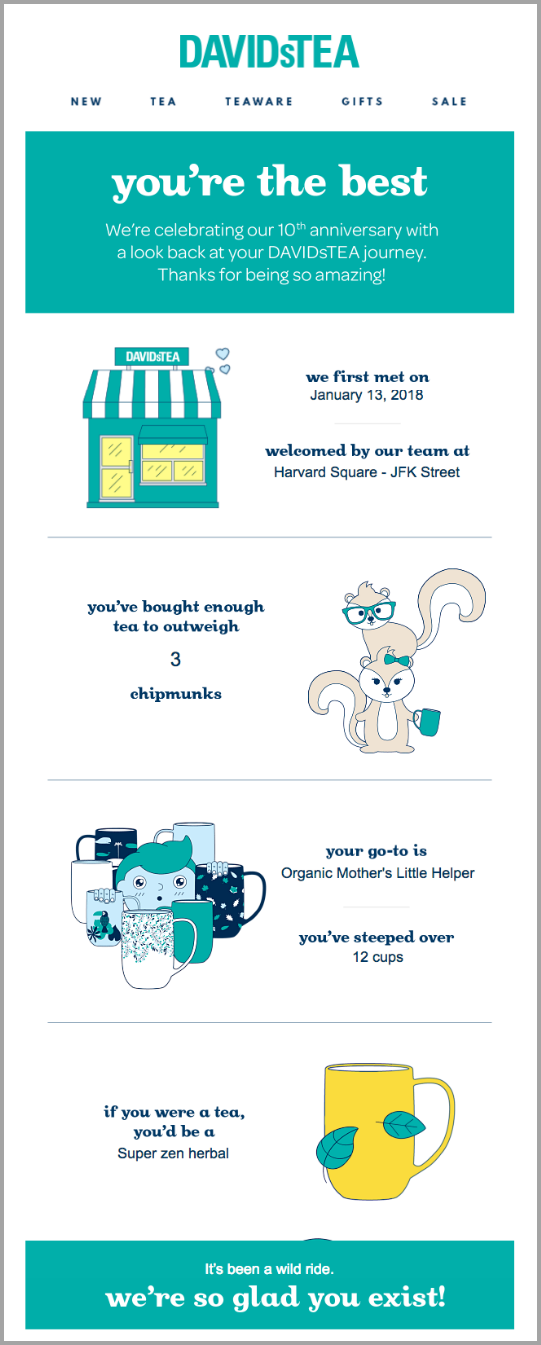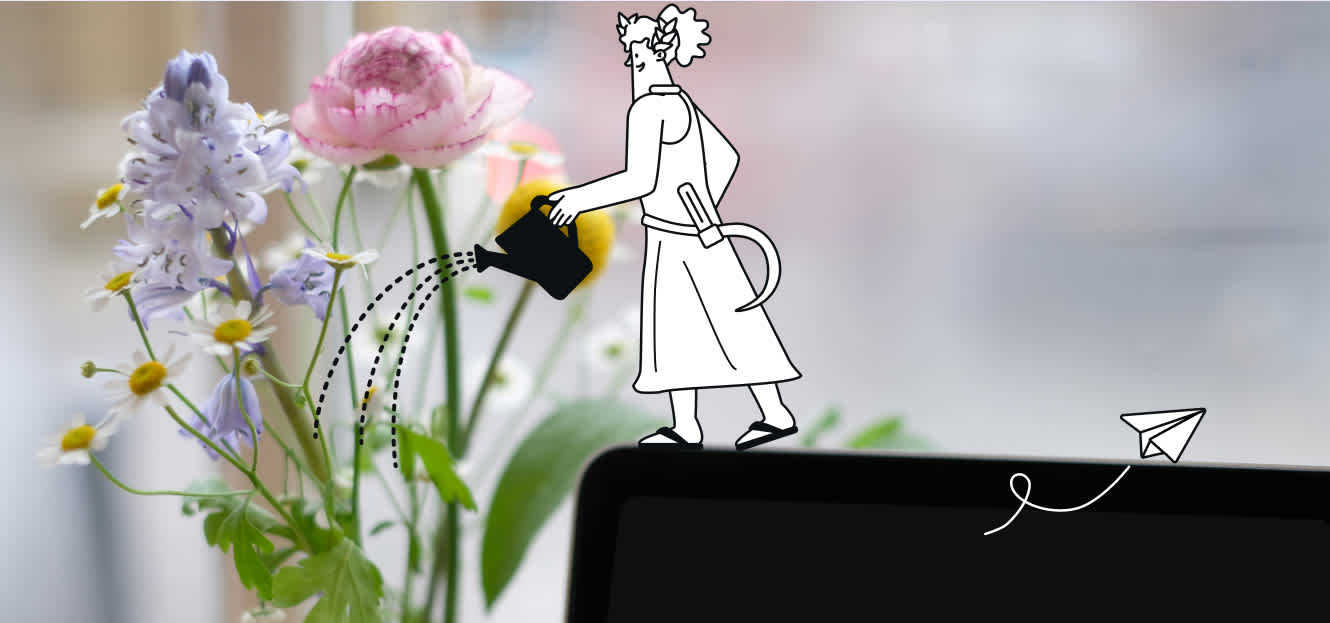Marketing
Boost your conversion rate with these 7 strategies
Converting our audience into paying customers is the ultimate goal of any marketer. Achieving this requires conversion rate optimization across multiple channels. We’ll run through a winning strategy to boost your marketing conversions.

PUBLISHED ON
Conversion is the ultimate goal for many areas of life – makeovers, home improvement, science fiction B-movies with creepy body snatchers. One of the places where conversion matters most is the all-important area of email marketing. But how do you optimize these conversions?
During Email Camp 2020, we learned a lot about optimizing conversion rates from Paresh Mandhyan, Director of Marketing at VWO. You can use many strategies to optimize your own conversion rate, and we’re here to help you understand a few of the best. Let’s dive in and see how to boost conversion – no body snatching required.
Table of contents
Homepage
Blog
Landing pages
Pricing pages
Strategy #1: Use A/B testing to increase your conversion rate
Strategy #2: Leverage personalization and segmentation
Strategy #3: Incorporate email marketing techniques into the larger customer experience
Strategy #4: Happy teams mean CRO strategy dreams
Strategy #5: Collect, track, and analyze data
Strategy #6: Provide a smooth interaction
Strategy #7: Your best blog posts front and center
More customers for the same amount of traffic
The cost of acquiring customers will reduce
Extra money to make other investments for your business
Understand your traffic better
Call-to-action (CTA)
Multivariate (MVT) testing
Customer development
User recordings
What is the conversion rate and how is it measured?
In digital marketing, the conversion rate is defined as the relationship between the website visitors and those who carry out a certain action during a specific time in the sales funnel (awareness, interest, decision, action). In email marketing, this conversion rate is calculated using the click-through rate (CTR), which calculates the percentage of people that click on a link from all those who receive or open it.
Conversion rate optimization (CRO) is an essential part of online marketing strategies. Measuring the conversion rate is an important part of all types of digital marketing campaigns: email marketing, Adwords campaigns, social media publications, web page optimization on ecommerce sites or landing pages, pop-ups, and SEO strategies.
Conversion tracking is essential to determine the strategies you should use to attract a higher number of visitors to your calls-to-action (CTAs) and to increase the number of conversions that complete the desired action. To achieve a good conversion rate, marketers should monitor key metrics in web analytics tools (like Google Analytics) to know their average conversion rate and determine campaign benchmarks and conversion goals.
Search engine optimization vs. conversion rate optimization
Search engine optimization (SEO) and conversion rate optimization (CRO) go hand in hand. They are essential tools for any website. SEO drives traffic to your website by ranking it at the top of the search engine results page (SERP), while CRO drives people to fill out contact forms, make a purchase, or take a survey.
You won’t have a good conversion rate if you don’t have good SEO because no one will be clicking on your website. If your website is on the second or third page of Google results, most people won’t see it unless they specifically search for it.
4 areas to implement CRO strategy
Though it seems straightforward to apply CRO strategy to all areas of your website, there are a few pages where a conversion is more likely to happen. CRO is a valuable asset to all parts of your website, but here are a few where you are more likely to see better results.
Homepage
Your homepage is the first impression you make on visitors. This page should tell visitors everything they need to know about your website and provide them with multiple ways to convert, like a helpful chatbot, a CTA button to sign up, or a link to a product on your website.
Blog
A blog gives your visitors insight into what matters to your company (body snatching, perhaps), but is also an opportunity for readers to engage and convert. Putting CTAs in blog posts along with a conversion option enables visitors to take action. If your strategy includes monthly newsletters, you could include notifications about new blog posts in your email content.
Landing pages
With great website design comes an excellent user experience. You want to guide your users to each landing page, as this is where you will be ranking in the conversions.
Landing pages are intended for conversion since websites are designed to lead people to take action. Your product page could have a how-to video tutorial showing a product’s usefulness or a free sample if the user signs up for a subscription.
Pricing pages
A pricing page offers visitors the opportunity to see what your website offers. CRO is an easy way for you to insert an opt-in email form, a phone number for pricing inquiries, or a ticker reminding the visitor when the price of an item may drop.
7 conversion rate optimization strategies
Now that you know where to start your CRO journey, it’s time to learn the how. Whether used on your webpage, email, or blog, these strategies are sure to increase your conversion rate and provide insight into what your clients want.
Strategy #1: Use A/B testing to increase your conversion rate
As Paresh reminds us, marketing often needs refinement – and your emails are no exception.
A/B testing – or testing different elements of your emails to different members of your audience – can help you understand exactly what subject lines, preheaders, and other elements your target audience responds to. Most brands test “top-of-email” elements like subject lines, but you can get creative and test messaging, images, and any other pieces of content that you think can be optimized.
An example of A/B testing would be to test different CTAs in your emails to different segments of your audience. Paresh mentioned a test he had done with two different CTAs. One was specific (“let’s set up a time to chat”), and the other was vague (“reply if you need any help”). Ultimately, the more specific CTA won, and it had the bonus of directly impacting conversions by initiating contact with prospects.
By doing these types of tests, Paresh says, you can figure out which CTAs, images, and more lead to the most opens, click-throughs, and ultimately conversions. The winning elements can then be sent to the remainder of your audience – they’ll like them best, and you’re more likely to receive their interest. It’s a win-win situation.
“You optimize email for [conversion] opportunities – and ultimately, you get more opportunities by creating a better experience for the user.”
Paresh Mandhyan, Director of Marketing at VWO
Need some tips on how to start (and properly execute) A/B testing? Look no further than our A/B testing guide.
Strategy #2: Leverage personalization and segmentation
As you may have noticed from our above foray into A/B testing, engagement is key to expanding your audience conversions. You need to hook your audience in and appeal to them before you can convert them. Audience members will not engage with or respond to robotic or rote form emails or cold sales pitches that don’t appeal to their needs.
This, says Paresh, is where personalization (adding an audience-member-specific personal element to your emails) and segmentation (dividing your audience into groups based on their demographics and interests) can boost your success. Both of these strategies are ways for you to make genuine connections with your audience members and pay them attention based on their needs.
“Basic personalization is a given, but think about whether your email adds tangible value to the user. When you add value, it gives more results in the long run.”
Paresh Mandhyan, Director of Marketing at VWO
This is an opportunity for you to become truly involved – don’t pat yourself on the back for basic name inclusion, copy and paste anniversary notifications, or other quick fixes. Instead, figure out what your audiences truly need and want (for example, by using A/B testing), and give that to them.
An example of personalization that truly connects to your audience is reminding them of milestones from your brand journey together. The below example email from David’s Tea shows how your email copy can be directed at each of your audience members and how it can remind them of their personal interactions with your brand.

The email is simple and attractively designed, and it takes a fun “how we first met” approach to brand milestones, which pulls the audience member in without seeming rote or sales focused.
When your audiences are genuinely engaged with your emails, they’re much more likely to become a new conversion – or a repeat conversion. Increase your conversion rates with personalized appeals, reminders, and thanks – after all, it worked for the body snatchers, right?
Strategy #3: Incorporate email marketing techniques into the larger customer experience
Guess what? Email marketing techniques aren’t just for emails anymore. As Paresh says, you can incorporate email marketing techniques into other customer-facing experiences for a smoother, more harmonious audience journey. Emails are important, but you can’t rely on having engaging messages and no other premium brand content.
“Look at email marketing from an optimizing mindset. It’s not just about conversions and interactions – it’s about how you can add value for customers and create a better user experience.”
Paresh Mandhyan, Director of Marketing at VWO
To create a consistent consumer journey, incorporate personalization, segmentation, and other techniques into your web content, social media, and other communications. Interested consumers will want to see other examples of your content – make sure that it’s consistent and engaging across all platforms.
As Paresh points out, you can use these techniques to increase customer immersion and ultimately conversion. A well-thought-out, smooth customer experience will create good impressions in your potential customers’ minds and make them more likely to build lasting relationships with your brand.
Strategy #4: Happy teams mean CRO strategy dreams
Your team will thank you if you make their job easier. Creating an automated workflow helps your team focus on other conversion parts, like booking meetings, chatting about pricing, or researching. Your team will be well equipped as long as they have automated marketing tools on their side.
Strategy #5: Collect, track, and analyze data
There is nothing more powerful than data. As you comb through your data, patterns will emerge. Which emails had the highest engagement in the past? Do most visitors navigate to a specific page? Does your engagement fall in a particular area? What is your bounce rate? Using this CRO strategy helps you understand a visitor’s journey from initial interest to action and every decision in between.
Strategy #6: Provide a smooth interaction
People don’t want to work too hard to get what they want. They also don’t want to be annoyed or feel pressured to do something. There’s a delicate balance between promoting your product and losing a customer because you tried too hard.
People like a little bit of guidance, but they also don’t want to be told what to do. The fewer steps a person has to follow, the easier it is for them to sign up. A well-designed email is clean, simple, and enticing. Well-placed elements like arrows, buttons, and panels that match your website show visitors where you want them to go.
Strategy #7: Your best blog posts front and center
You need to do your research before implementing this CRO strategy. Identify which blog posts have the highest traffic numbers but lowest conversion rates. Why aren’t people converting? You might have a weak CTA or insufficient SEO. These pages need to be tweaked to ensure the highest conversion possible.
Similarly, look at the pages with the highest conversion rates and try to promote these pages over others. Look at what you’re doing right and try to maintain that level of interest in future blog posts and emails, or retroactively optimize your older content. Remember to update when necessary to remain relevant.
4 benefits of conversion rate optimization
Once you’ve implemented some CRO strategies, your conversion rate will improve. While this is the primary goal, there are some latent benefits that might not seem as obvious.
More customers for the same amount of traffic
Your marketing budget likely limits the amount of paid traffic it encompasses, which is a way to increase website traffic, therefore improving your likelihood of converting. But you can implement CRO strategies to increase conversions, even when your traffic numbers remain the same. If you have steady traffic, your visitors are already there – it’s up to you to secure their conversion.
The cost of acquiring customers will reduce
Your marketing team will celebrate once your CRO strategy is in place. When you optimize correctly, you spend less on traffic, but you see more engagement. This means more people are converting despite your budget remaining the same. Your profit per visitor has increased because you have more conversions.
Extra money to make other investments for your business
So what are you doing with all that extra marketing money? It’s up to you – take the team out for drinks or finally replace that broken ping pong table – because you now have the freedom to invest wherever you want. Investing in some eye-catching email designs is a start, or you could take the profit and thank your hardworking team.
Understand your traffic better
You’ve done the research, you’ve implemented your CRO strategies, and you’re seeing conversions. All the work you’ve done will benefit you in the future because now you know what works and what doesn’t.
Are you requesting surveys as part of your CRO? Use those testimonials as part of your email or website content (with the survey user’s permission). Did your bounce rate improve after CRO? Use that knowledge to your advantage. You can look at your data and rework your CRO if it begins to flounder. Data never lies, and research is always valuable.
4 parts of conversion optimization
Though it seems easy, there are many moving parts within CRO. You won’t get results without doing enough research. And though CRO may take time, it’s worth the effort.
Call-to-action (CTA)
This is the part of navigating your website or email when your user feels the need to engage and take action. CTAs tell your visitors what to do next, like sign up for a newsletter, receive a free sample, or be featured on your social media. CTAs invoke a sense of urgency in many people and are an essential part of any user experience.
Multivariate (MVT) testing
Like the aforementioned A/B testing, MVT does exactly what it sounds like – it tests multiple variables simultaneously. Visitors see different versions of your site, and whichever site performs the best is your winner.
Customer development
You can improve your CRO (and your business) by asking customers what they want. Designing your website and emails around what the consumer wants gives you a better opportunity to convert them. Use their testimonials to your advantage. Understand your customers on a deeper level to ensure conversion. Learning their pain points and providing them with solutions will help increase your conversion rate.
User recordings
Similar to a heatmap analysis, this tool records what visitors are doing as they explore your website. This can show you where people are getting stuck, where you need to improve, and where conversion rates are highest. This data is helpful because you can apply it to other pieces of your website.
Wrapping up
VWO Director of Marketing, Paresh Mandhyan, tells us that there certainly isn’t a magic formula to getting higher conversion rates via email. Instead, consistent conversion rates and strong relationships stem from using sensible, adaptive strategies to introduce customers to your brand and create an interest that becomes a conversion and a relationship.
Want to learn more about how to optimize your conversion rates? Check out Paresh’s session at Email Camp 2020 below.
Adventures in experiment-led growth – strategies to optimize your conversions from Mailgun x Mailjet.
Strategies like A/B testing, segmentation, personalization, and more enable you to understand what your users want and need and have the power to convert them quickly and efficiently into paying customers. It may not be as exciting as conversion via body snatching, but these techniques will help you get attention when it matters most. So, what are you waiting for? Get out there and start converting.








